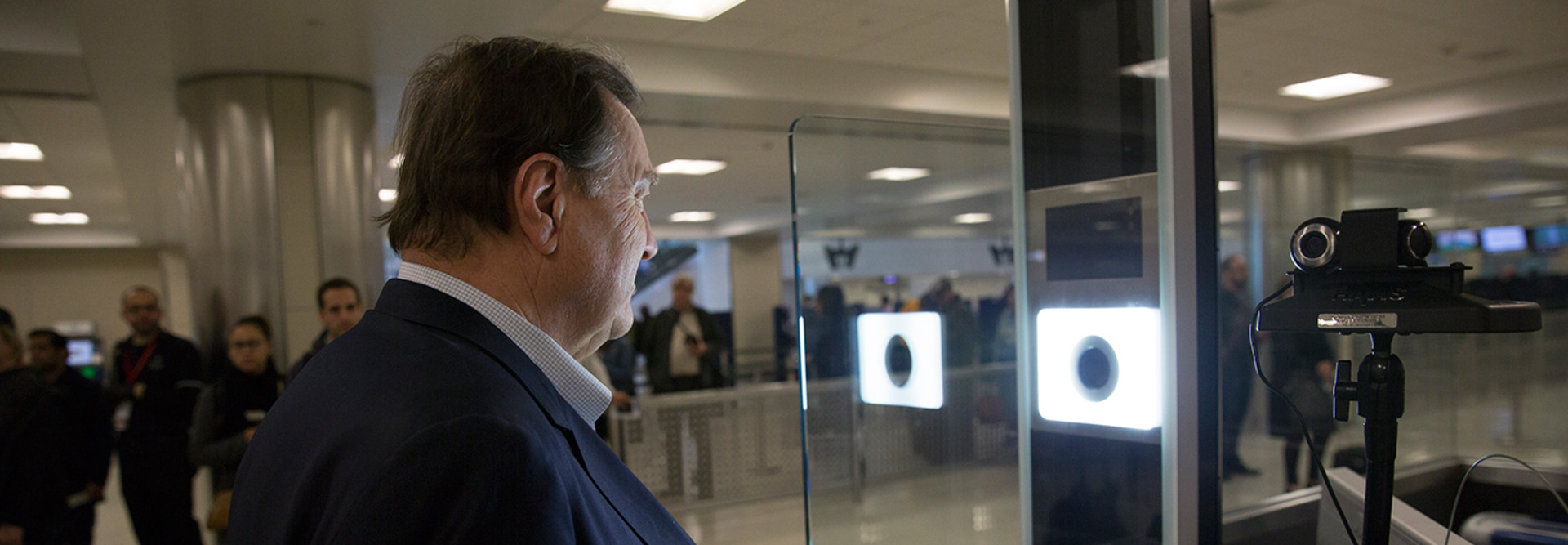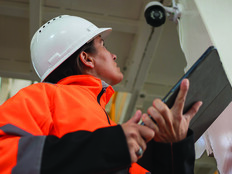DHS Moves Forward on Cloud-Based Biometric Verification
Two Department of Homeland Security components are moving ahead with a second phase of testing on a biometric verification system for passengers leaving the United States on international flights.
The Transportation Security Administration and Customs and Border Protection are continuing to test the Traveler Verification Service, which compares photos of passengers against a temporary, cloud-based database that houses previously captured passenger photos.
CBP has been working with TSA since 2017 to test the system at various airports in order to track whether people are overstaying their visas via biometric identification. And GCN reports that TVS “can shave 15 minutes off of traditional manual methods of comparing passenger ID photos against larger databases, according to airports and airline partners where it is being tested.” Traveler participation in the process is voluntary.
The goal is to make the verification system more efficient, and CBP uses the cloud-based database to speed up the process of matching photos, which has been manual and required the use of large, unwieldy databases.
According to FCW, “CBP and TSA have been testing the system at several airports across the country since last year. Airports include Atlanta's Jackson/Hartfield International, Boston's Logan International and Los Angeles International, as well as Los Angeles International.”
Find out how biometric identification could enhance security at the Pentagon.
CBP Moves to New Phase of Biometric Verification
The first phase of the testing, which began in October 2017, explored the feasibility of using TVS to verify the identity of passengers. The new testing will look at how passenger photo data is stored and sent to TSA document checkers.
In the second phase of the testing, a TSA security officer directs all travelers with a boarding pass for international outbound flights to a CBP-owned camera, which is placed near the podium at the TSA checkpoint to take their photo, according to a DHS privacy impact assessment update document. Once the photo is captured and transmitted to the TVS, it is converted into a template and matched against the gallery of preassembled templates of previously captured images.
The security officer will receive the result of this matching process on a TSA-owned tablet at the screening podium via a mobile-friendly dashboard application developed by CBP for the security officers, according to DHS.
If the TVS confirms the traveler’s identity, the CBP dashboard app will display the newly captured image, along with the full name and date of birth of that passenger, for review by the security officer, who will direct the traveler to the appropriate screening lane based on TSA’s standard security screening procedures.
If the system cannot capture an acceptable image of the passenger, or there is no match for the traveler’s photo, the TSA tablet will display only the captured photo but no biographic information. Then, the TSA security officer will follow TSA’s standard procedures for verifying the traveler’s identity, and the traveler will proceed to the appropriate screening lane.
In an effort to protect passengers’ privacy, CBP says it “seeks to minimize the data it maintains by purging facial images as quickly as possible after use,” according to DHS. Each traveler’s biographic and biometric data is deleted from the TSA-issued device after two minutes.
All personally identifiable information collected for the TVS transaction is stored in a secure database within the CBP network, the DHS document notes. CBP does not retain images of U.S. citizens, but does retain images of noncitizens for up to 14 days for confirmation of the match, as well as evaluation and audit purposes. CBP says it deletes all photos, regardless of passengers’ immigration or citizenship status, from the TVS cloud matching service within 12 hours of the match.









